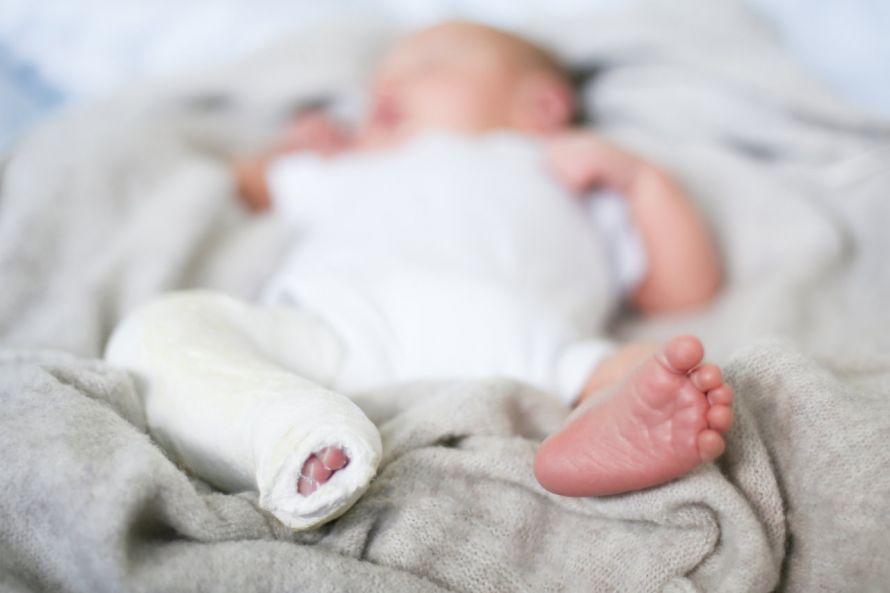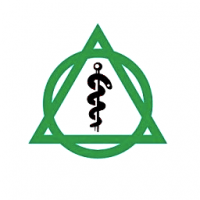Here you can find additional information and selected specialists and centers for the treatment of clubfoot.
Here you can find additional information and selected specialists and centers for the treatment of clubfoot.
Recommended specialists
Brief overview:
- What is clubfoot? A serious deformity of the foot that can be congenital or acquired.
- Causes: In congenital clubfoot, certain muscle groups do not develop correctly. Injuries, neurological diseases, and nerve or tendon degeneration of the lower leg can later lead to clubfoot.
- Types: Clubfoot is comprised of several individual deformities: Pigeon toe, equinus foot, and pes cavus.
- Treatment: In the case of congenital clubfoot, the deformity can be corrected with a cast and physiotherapy if necessary. Conservative measures often do not help with acquired clubfoot. However, the degree of severity determines whether surgery is indicated.
- Prognosis: Especially in infants, there is a good chance of eliminating the deformity if treatment is started early.
Article overview
How does clubfoot develop and what are its forms?
The reasons for the development of congenital clubfoot are not clear. It can be both congenital and acquired in the course of life.
In congenital clubfoot, certain muscle groups are not fully developed during pregnancy.
In the case of an acquired clubfoot, on the other hand,
- Injuries,
- Neurological diseases, and
- Degeneration of nerves or tendons of the lower leg
play a central role.
Trauma to the lower leg can result in nerve injury and subsequent nerve breakdown.
If the nerve fails, the muscles that are innervated by this nerve can no longer be controlled. This results in a loss of function.
Many muscles of the lower leg have a stabilizing function on the arch of the foot. With the loss of this function and atrophy of the muscles, foot deformities can occur, including an acquired clubfoot (due to the trauma).
The complex deformity of clubfoot is comprised of several individual malformations affecting the various joints of the foot.
Pigeon toe
Pigeon toe is considered the most common deformity of the feet in infants. This causes the toes in the front of the foot to deviate inward.
This affects not only the metatarsus, but also the toes. This deformity can either regress on its own or be corrected with the help of suitable therapies.
Equinus foot
Equinus foot is the term used to describe a condition in which the affected person cannot fully plant their heel. In a sense, the affected person walks on their toes.
Children and the elderly who are bedridden are among the groups of people most commonly affected by equinus. The pigeon toe deformity that occurs in clubfoot is usually caused by a shortening of the Achilles tendon. The Latin term for this is pes equinus and the origin of this name is that horses also walk only on their toes.
Pes cavus
Pes cavus is basically the opposite of a flat foot. The instep is much higher in this condition and the foot looks compressed in its overall appearance. This makes it appear smaller than is the case with the physiological position.
In addition to these deformities, there is an internal rotation of the soles of the feet, the so-called supination position. Because of this position, sufferers walk on the outside edge of the foot.
How is clubfoot treated?
In congenital clubfoot, treatment should be started immediately after birth, if possible. The sooner treatment is started, the more likely the foot will be normal after treatment is completed.
If not treated immediately, permanent deformities may occur, which can only be treated by surgery.
When choosing the right treatment method, a distinction is made between congenital and acquired clubfoot.
Congenital clubfoot
Surgery is not necessarily indicated immediately for congenital clubfoot. This is because the tissue of newborns and babies is still quite flexible and can be treated in other ways.
For example, there is the possibility of working with plaster. For this purpose, the foot is manually corrected on the day of birth and plastered in the corrected position. Manual correction is also called redression treatment. This is to bring the feet back into the correct position.

Clubfoot treatment using a cast for a newborn © SylwiaMoz | AdobeStock
As a rule, this method is not associated with pain for the babies. The plaster cast is changed at longer intervals, thus gradually compensating for the deformity. In support of this, the joints are mobilized by professional physiotherapy and physical therapy.
If the redression treatment is carried out correctly and the cast is applied correctly, conservative therapy is often promising.
However, to ensure success, a splint must be worn at night or special shoes on top of the plaster treatment.
If conservative therapy does not bring the desired success, surgery is indicated. This often involves lengthening the Achilles tendon so that the equinus position can be corrected.
In addition, within the framework of foot surgery, corrections to the bones or the ligamentous apparatus may also be performed.
Acquired clubfoot
In the case of acquired clubfoot, on the other hand, conservative treatment methods rarely lead to the desired result. Splints or special shoes help, for example, if the nerves are the cause of clubfoot in individual cases.
However, the question of whether surgery is indicated depends not least on how far the clubfoot has already developed. The more this is the case, the faster surgery should be performed.
However, surgery alone is not enough in this case. In addition, patients often require long-term immobilization by means of a plaster splint to fix the surgically corrected position. Within the framework of professional physiotherapy, intensive work is done on the musculature.
Postural corrections are also applied so that clubfoot can be addressed.
What is the prognosis for clubfoot?
If clubfoot is treated in time and, if necessary, also surgically, there is a good chance of eliminating these deformities, especially in infants.
However, the longer the treatment is put off, or if therapy isn’t done at all, the worse the patient's symptoms become.





















